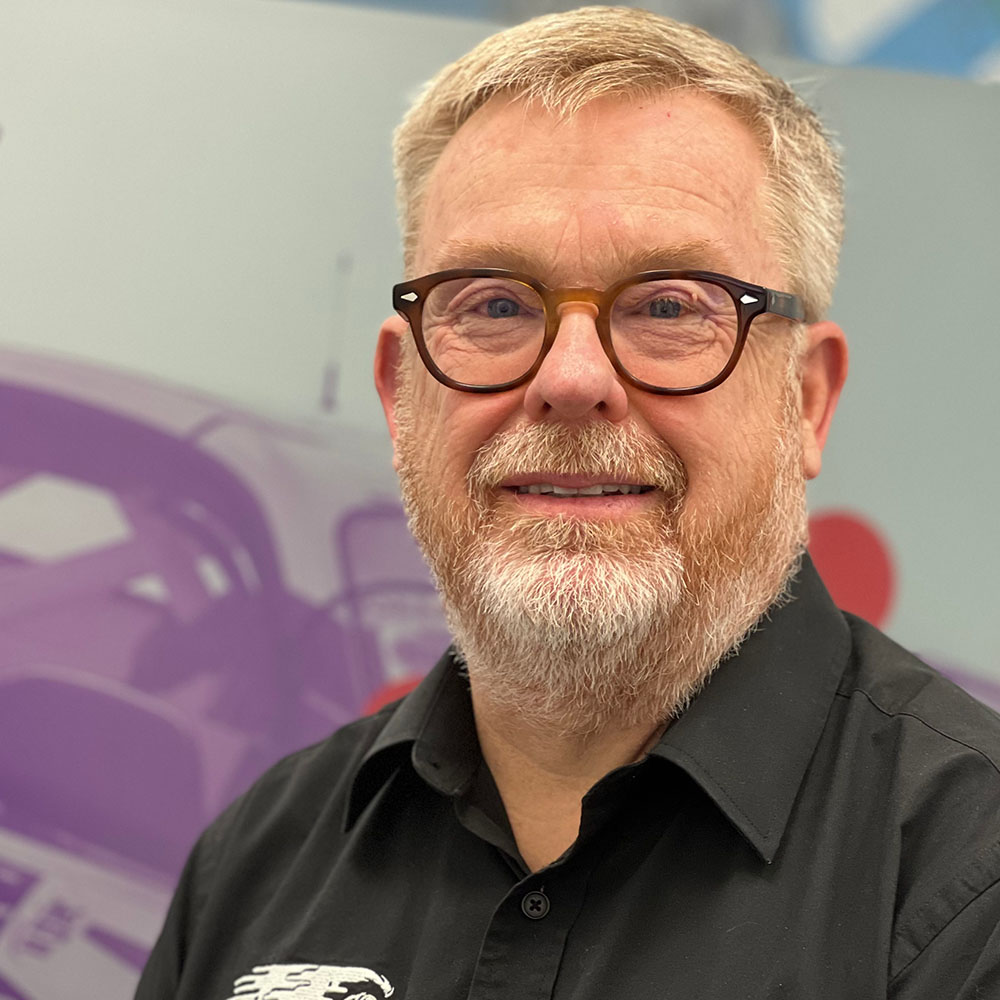Link Engine Management is enabling decarbonisation by retrofitting vehicles to use hydrogen as a clean-burning alternative fuel. CEO Andy Millard explains why hydrogen is the fuel of the future, and how their R&D will have an impact.
Can you explain in non-technical terms how hydrogen works as a fuel and why it’s desirable?
Hydrogen is essentially just a fuel in its own right. So when hydrogen is combusted through an internal combustion engine, it just acts in a very similar way to what gasoline does. It provides a medium which ignites and creates energy, which makes the engine function and powers the wheels, in the case of a car.
Gasoline, in its exhaust process, pushes out carbon monoxide and a whole load of greenhouse gases. But hydrogen has only two main outputs. It combines with the oxygen in the air to ignite, and when it fires the hydrogen molecules bind to the oxygen molecules. What comes out – the majority of the “exhaust” – is just water, friendly oxygen, and a little bit of trace elements.
Ammonia just carries hydrogen in a different way. It’s just a combination of hydrogen and nitrogen but it has a very stable liquid form. The way it travels in a vehicle is very similar to gasoline: you just fill a tank up with it and then you process it through the engine. It’s slightly more complicated than that but the output is almost non-polluting. There are trace elements but we’re talking about point zero of bugger all compared with gasoline and diesel.
And it’s readily available. Sure, green hydrogen takes a lot of investment and electricity to create, but there’s a lot of hydrogen that is currently just blown off into the air as a byproduct of industrial processes that we can harvest.
I’m sure that EVs will be around for a long time, but they won’t be the only solution the world seeks to decarbonize. I’d say 20-30% of our cars will be electric, particularly in urban areas where the infrastructure exists. But for heavy transport or farm machinery or utes and builders’ vehicles, you’re going to have to have an alternative fuel, which is where hydrogen or a synthetic fuel comes into play.
What is Link working on to help us get to a decarbonised future?
At Link Engine Management, we’re leaning into where our technology works best. So we’ve got six separate R&D projects underway at the moment, which are all around retrofitting hydrogen or ammonia fuel systems into internal combustion engines as they exist today. That’s where our skill is and that’s where we can make the most difference.
The word retrofit is important because there’s 1.3 billion vehicles on the road across the globe. There’s also a lot of capital equipment: heavy transport trucks cost a million dollars a unit, no one’s going to roll them off the road and just go buy a whole fleet of new ones. So there is a strong push towards retrofitting a decarbonised fuel solution into existing cars.
We have vehicles running with a mixture of hydrogen and diesel, and those projects are on the road as we speak today. They’re early pilot programs, trying to demonstrate and prove the technology. We and our partners are trying to push to find the solution as quickly as possible, but also trying to find one that’s meaningful long-term, so that we can make that leap to commercialisation.
It’s important to note that you don’t have to go from 100% diesel to 100% hydrogen overnight to make an impact. If you can go to 50/50, or even 70% diesel and 30% hydrogen, you’re still reducing your carbon footprint by about a third.
I think one thing really worth mentioning is that Link has, at the moment, right now, an off the shelf hydrogen and ammonia engine management system. We’re one of the few companies in the world who have a system where you can actually grab the box and put it in today – if you can do the rest of it. And there’s a momentum building as Toyota, BMW, Honda and other major manufacturers see that the future is going to be in hydrogen and alternative fuels. The rest of the pieces of the puzzle are coming into place, and there’s a shift in ideology.
There seems to be a lot of momentum behind hydrogen at the moment. What’s driving that and what’s New Zealand’s place in the global ecosystem?
Car manufacturers have invested trillions of dollars in their supply chains to take raw materials and turn them into internal combustion engines. Manufacturers know that the best way to maximize their capital is to change the fuel, not the actual engine. Reproducing that supply chain for another technology like EVs is not only going to cost a fortune, but it also will contribute heavily to greenhouse emissions due to rebuilding factories and facilities.
Australia and New Zealand are thinking openly and constructively about it. Australia has a very low renewable electricity generation, so driving EVs just boosts emissions from coal- and gas-fired power stations. But they can easily produce hydrogen with solar power. Christchurch International Airport is also building a solar farm to produce hydrogen.
Christchurch is a bit of a hydrogen hub, actually: the airport has a partnership with Airbus, and there’s the Pratt & Whitney engine centre so they have good infrastructure in place to support innovation. Fabrum is based there, and they’re so important because they’re working on the lightweight, high-pressure vessels that allow you to store hydrogen, along with building on-site hydrogen generation facilities. There are still a few technological hurdles to climb over, but once they solve that problem with their expertise, and you combine that with our off the shelf solution, you can basically start driving down the road in a hydrogen car tomorrow.
Another wonderful example is H.W. Richardson, a large transport company headquartered in Invercargill who want to have a hydrogen-diesel mixed fleet, so an end-user customer who wants to reduce their carbon footprint. Fabrum is building the plants to make the hydrogen. Link, also based in Christchurch, is hoping to be the middleman, enabling their trucking fleet to be the most environmentally savvy in the world.


